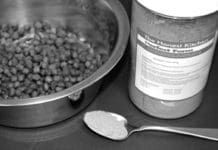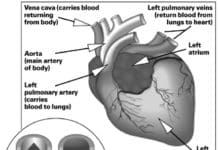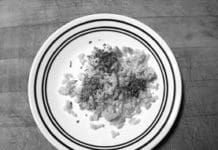Home Search
allergies - search results
If you're not happy with the results, please do another search
How Coconut Oil Benefits Your Dog’s Health
There are dozens of products on the market, but look for unrefined oil at your health food store. We like to see oils packaged in glass jars (rather than plastic containers). The really good stuff is expensive, but its benefits are worth the money.üOne good candidate for supplementation is the thick-coated dog who is often greasy or smelly. Many of these stinkers" have freshened up when receiving a little coconut oil daily. Just start out with a low dosage (perhaps just a dab) and increase slowly."
How to Choose the Right Dog Food
No one is in a better position than you are to decide which food you should feed your dog. That may not be what you wanted to hear. You may have been hoping that someone would reveal to you the name of the world's healthiest food, so you could just buy that and have it done with.
Understanding Canine Vaccinations
Most dog owners are responsible and understand the importance of protecting their companions from preventable disease. That’s surely what motivated the dozens of people I observed standing in a long line with their dogs and puppies at a low-cost vaccination clinic offered in a local pet supply store.
The Canine Digestion Process
Digestion involves the balanced interaction of several biodynamic systems. A healthy animal ingests raw materials (food), changes these raw materials into usable nutrients, extracts from these nutrients the essentials for life and vitality, and excretes (in the form of feces) those substances that have not been digested or that werent utilized.
Therapeutic Essential Oils for Your Dog
Last month's aromatherapy article introduced therapeutic shampoos, spritzes, and massage oils. If you and your dog tried any of the wonderful products recommended there, you may be ready to buy some essential oils and try your own custom blending for maximum effects.
Conventional and Holistic Veterinarians Working Together
Every day the already dazzling array of options for caring for your dog grows even more. There are myriad modalities in the realm of holistic care, including complementary and alternative options, as well as conventional veterinary medicine, with its low- and high-tech diagnostic and treatment procedures. Which way do you go when your dog has a health concern?
Won One, Lost Others
her family was ridiculously generous in sharing her with me
Dog Ear Infection
Chronic ear infections are the bane of long-eared dogs, swimming dogs, recently vaccinated puppies, old dogs, dogs with an abundance of ear wax, and dogs with allergies, thyroid imbalances, or immune system disorders. In other words, ear infections are among the most common recurring canine problems.
Why You Should Switch Dog Foods Frequently
Without a doubt, the most common question I am asked is What kind of food should I feed my dog?" Unfortunately
Letters: 05/04
and lamb meals are also by-products meals but of a lower order. They are nutritionally valuable nevertheless. "Human grade" chicken solids
Growing Dog-Healthy Herbs
There are many easy-to-grow herbs that are also good medicine for dogs (and their people). But first, a disclaimer: When I say “easy to grow,” in my case I mean that they are easy for my wife, Sue, to grow. It is Sue’s “paws in the dirt” concept that I think is perhaps the most important when we are thinking about gardening for the health and healing of our dogs. I believe that all of us (two- and four-leggeds) absolutely need to “ground” ourselves with Mother Earth.












